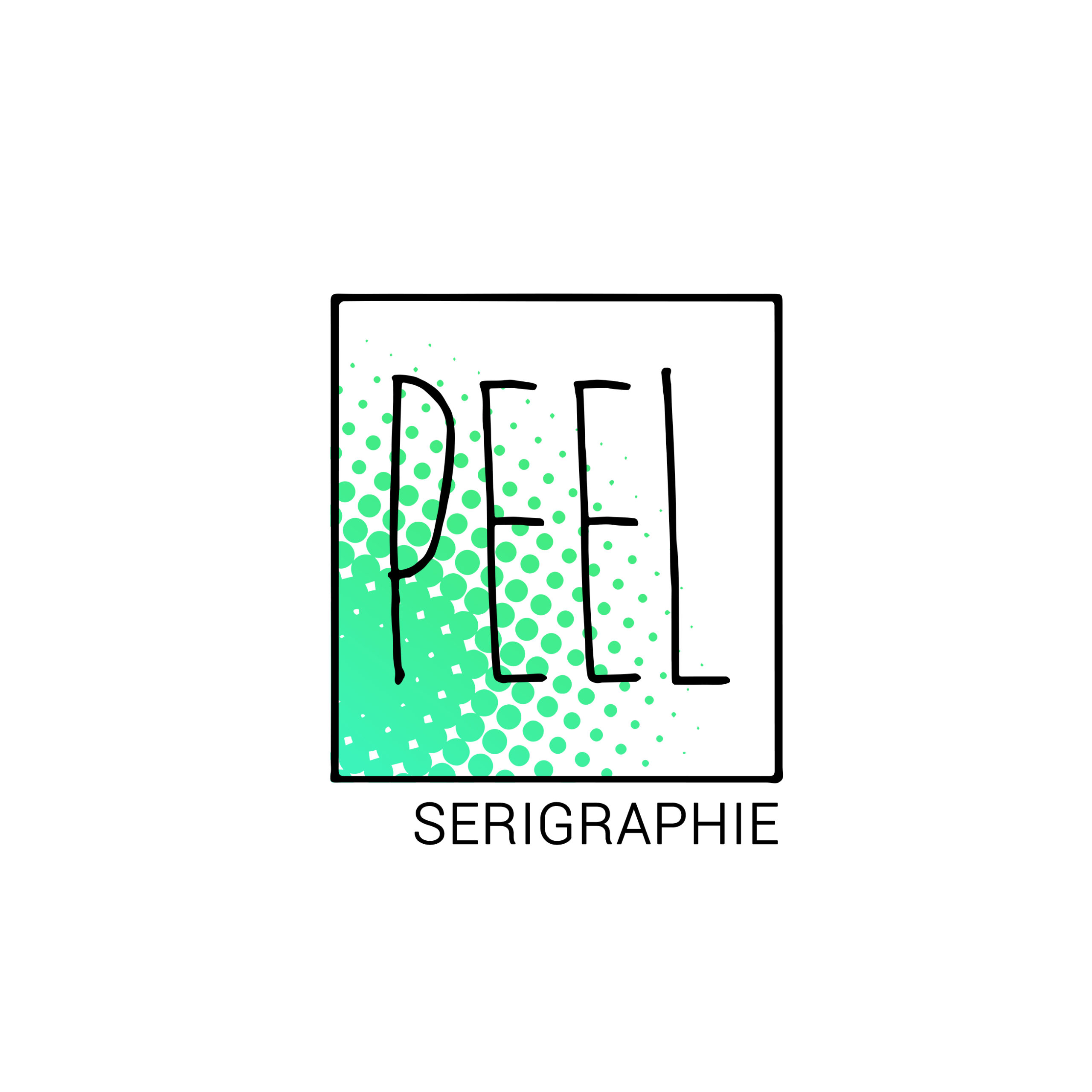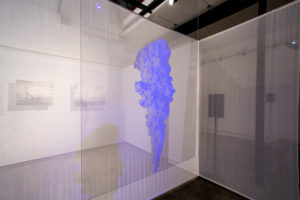Le Souffle de la Terre*
*The Breath of the Earth
„[…] he has a real love affair with the volcanic rocks that generate the oceanic crust and create these strange landscapes that no being had ever contemplated before man introduced light into the thick darkness that permanently envelops them.“
– Jacques-Yves Cousteau.

2colors screen print, 130x100cm, painting with black light Ink, Plexiglas, Black light Projector, 2018, Galerie du Faubourg 12, Strasbourg, France.
Our Earth, which has been in constant motion since its origin, has seen significant changes over the millennia. Humanity is animated by the idea of understanding the movements of this globe that serves as its habitat. Although the knowledge of our world is more and more thorough and documented, there are still areas of darkness such as the ocean floor. This remote environment is the subject of constant research, which led to the discovery, about forty years ago, of a hitherto unknown geological phenomenon, hydrothermal springs.
These „oceanic oases“ without light, with extreme temperatures and high hydrothermal pressure, are astonishingly inhabited by teeming ecosystems. These unique, strange landscapes hide a silent and magical world. The hydrothermal springs, thanks to their very particular characteristics, have made it possible to highlight new elements in scientific research, particularly on the theory of the origin of life on earth. These aquatic chimneys, with a hostile environment at first sight, are made of an extremely varied chemical material and are therefore conducive to the development of infinitely rich and interesting endemic biological specimens.
This singular abyssal environment today allows scientists to progress in their knowledge about the origin of life. It is also a major tool of exobiology, an interdisciplinary science that studies the factors and processes, particularly geochemical and biochemical, that can lead to the appearance of life, in general, and its evolution. It studies the possibility of life elsewhere in the solar system and even on possible exoplanets. Hydrothermal springs, as ancient as the world, and a priori at the origin of life, are today a tool for observation and research in the conquest of space and its understanding. Going from great depths to the farthest space, this is what fascinates me because it creates an opening to a permanent evolutionary reflection.
These scientific considerations form the basis of my research and my desire to develop work around these natural phenomena.
Since at the level of hydrothermal sources, light is non-existent, photosynthesis is impossible, excluding any primary production of oxygen. Thus, bioluminescence, produced by living organisms, is the only source of light in the depths. I wish to recreate this luminous complexity by working with light from space as well as with ultra-violet neon lights. The transparent support on which I will make a silkscreen print representing a hydrothermal source allows me to make more or less visible this smoke whose source remains unknown, and to melt it in space, offering everyone the choice of a free interpretation. It is thus a work that is not fixed. The spectator will see floating in the exhibition space, a shadow, a silhouette of smoke, sometimes white, sometimes blue, as they are found in the abyss.
Emma THIEL




